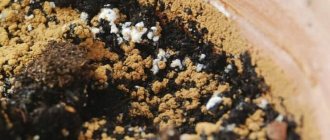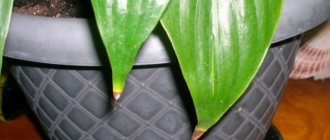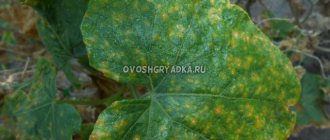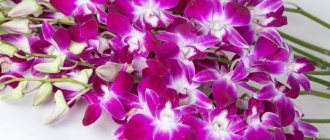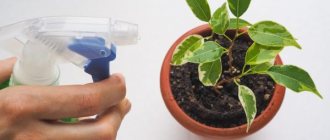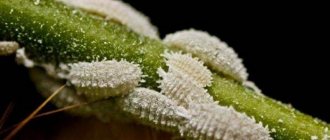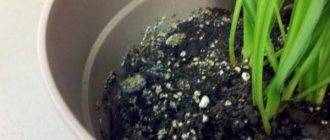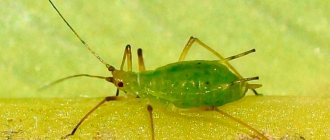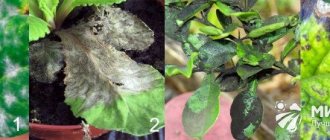International name:
Synonyms:
Characteristics:
| Complexity: |
| Development cycle: |
| Light mode: |
| Watering mode: |
| Temperature: |
| The soil: |
| Key Feature: |
Foliage color
Bud color
Dimensions Flower sizes
Taxonomy:
| Domain: |
| Kingdom: |
| Department: |
| Class: |
| Order: |
| Family: |
| Genus: |
White spots and plaque on Money Tree (Crassula Ovata) are a common problem and can ruin the appearance of the most beautiful plant. Luckily, identifying the causes and treating this problem is easier than you think.
The main reasons for the appearance of a white coating on the leaves of Crassula can be mold such as powdery mildew, excess salt secretion or insect infestation. Our guide will help restore your flower to health and optimal appearance. Read more about this below.
Silvery dots on the leaves and other parts of the Crassula: what is it and why does it appear?
Crassula rarely gets sick, but sometimes gardeners are bothered by the white coating that appears on the leaves and trunk. Diseases in Crassula can appear due to improper care or insect pests.
- Incorrect watering. White spots on the money tree indicate improper watering. The plant does not like excessive moisture. The roots of the succulent may begin to rot, in which case it will be much more difficult to save it (why do the roots rot and what to do in this case?).
- Mealybug. If you notice a white coating on the axils of the leaves or on the roots that looks more like cotton wool, this indicates that a mealybug has settled on your Crassula. This parasite slows down the growth of the plant and bends the shoots. Because of it, the leaves begin to fall.
- Spider mite. The appearance of spider mites is indicated by white-yellow spots on the leaves. If you miss treatment at this stage, this will lead to the appearance of cobwebs and parasites on the plant.
- Fusarium rot. The disease in the money tree is difficult to notice when the trunk and leaves have not lost their elasticity. If you find a white coating, try rubbing it gently with your fingers. If you smell mold, it means the succulent is affected by Fusarium rot.
Description and conditions for growing indoor plants
Crassula arborescens is a herbaceous plant that grows in the form of a tree. This plant is a succulent. Its succulent trunk and leaves accumulate a supply of moisture necessary for the life of the plant. The leaves are round and coin-shaped. This is the reason for one of the names of the plant. The color of the leaves is dark green, sometimes with a reddish tint. Under natural conditions it blooms with inconspicuous cream flowers. At home it practically does not bloom.
The money tree is an unpretentious indoor plant.
It reproduces easily and does not require special care. But some growing conditions must be observed. This:
- Wide and shallow pot
- Availability of drainage.
- Loose soil.
- Abundant, but not frequent watering.
The drainage height for a young plant should be at least 2 cm. Buy soil for growing succulents or prepare it yourself, combining turf soil, humus and leaf soil, a little clay to retain moisture, and charcoal. Such soil is not compressed in the pot, squeezing the roots and preventing moisture from passing into the pan.
The money tree needs to be watered abundantly, but rarely. Succulents store moisture for a long time. Watering too frequently can cause root rot. If you follow these simple conditions, then there should not be any special problems with the money tree. But still, you shouldn’t ignore it. Owners often complain about a white coating covering parts of the plant.
Crassula treatment: how to get rid of the problem?
If the fat plant is covered with a silvery coating, it is important to take timely measures to save the plant, and what exactly needs to be done is described below.
If watering was incorrect
Crassula needs rare but abundant watering, as it retains moisture. In summer, the plant should be watered 1-2 times a week, in winter – once every two weeks. Water the Crassula with water at room temperature. Pay attention to the location of the plant in your home (office). The succulent loves indirect sunlight.
What to do if you have mealybugs?
A soap solution will help deal with mealybugs. If you find only a white coating in the form of fluff, then treat the plant with cotton swabs. Repeat this procedure several times. If there are parasites on the affected areas, you can fight them with the help of insecticides:
Ventilate the room: Crassula’s immunity will be strong.
If you have spider mites
Spider mites do not like high humidity. You need to give the plant a warm shower, treat it with a soap solution, a solution of garlic or tobacco, cover it with a cap and create a greenhouse. Biological products such as:
After a week, repeat the procedure. Inspect other plants (if present) for harmful residents to prevent them from appearing again.
For fusarium rot
Fungicides cope with fusarium rot: “Fundazol” and “Fungicide”. It is necessary to transplant the succulent into a new pot.
- It is necessary to remove all the old soil, as traces of the disease may remain on it, and inspect the roots.
- If some of them have begun to rot, then they should be removed with sterile scissors.
- Dip healthy roots into a solution of potassium permanganate for a while.
- To make the plant take root faster, soak it in a root formation stimulator.
Despite its unpretentiousness, the money tree is susceptible to diseases. If you notice the disease in time and start fighting it, Crassula can be saved. With proper and competent care, you can extend the life of your plant for a long time.
Reproduction
Crassula propagates very easily by seeds, shoots and leaves. The last two methods are very common.
Seeds purchased in a store can be planted in a substrate for succulents, mixed in equal parts with river sand. They do not need to be deepened or sprinkled. It’s very easy to shake the container so that the seeds are mixed with the ground, moisten it by spraying, cover it with film or a textile product and place it in a warm place. After 1.5–2 weeks, shoots will appear. Grown plants need to be planted in some glasses.
With leaves and shoots everything is much easier. Crassula often sheds its leaves on its own. After a certain time, you can notice that the leaf has successfully taken root. Then a new plant will emerge from it. The shoot must be planted in a ready-made moistened substrate without waiting for roots to form. Watering should be done carefully, without overmoistening the soil.
Photo gallery: methods of propagation of Crassula
Money tree diseases
The leaves of the money tree are turning red
Often the leaves of money trees turn red when exposed to direct sunlight. The problem is especially common when growing succulents on the south side of the house. Initially, the color changes at the edges of the leaves, then the red spot spreads over the entire area of the shoots. At the same time, a sluggish, wrinkled and unaesthetic state of the leaves is observed. Moving the pot to partial shade will help save the plant from the inevitable loss of leaves.
Symptoms of Crassula Disease
A red hue on the inside of the leaf indicates the need to check the soil used to grow the money tree. The problem often lies in improper and unstable watering. At a comfortable room temperature and diffused light, the plant is moistened once a week in spring, once every 3 days in summer, and once every 7-10 days in winter and autumn.
Why are the leaves falling off the money tree?
A rare occurrence for the money tree is the shedding of leaves. There are several reasons why the leaves of the fat plant fall off; more often than not, gardeners violate the rules for caring for the crop:
- Exceeding the dosage of fertilizers is also a common mistake among flower growers who are interested in why fat plants drop their leaves (excess mineral salts are especially dangerous).
- Incorrect watering. Many believe that if Crassula prefers to grow in arid Africa, the plant needs to be watered extremely rarely. In summer, a lack of moisture for the money tree is accompanied by a loss of leaf elasticity and rotting of the lower part of the trunk. Excessive moisture and stagnation of water in the soil will cause rotting of the roots and shedding of leaves.
- Burns that cause redness of the crassula in direct sunlight.
- Sudden changes or consistently low room temperatures cause the leaves to fall off.
- You should not water the southern crop with chilled water; the plant will lose its juicy dark green color.
Fungal diseases of Crassula, caused by harmful microorganisms at high humidity and air temperature, are less common. The main signs of a bacterial attack are a white coating, silvery dots, the plant begins to wither and shed leaves.
Yellowed crown of Crassula
Ways to combat infectious diseases:
- Scale insect is a pest in the form of an earring with a waxy shell. Recognized by light brown tubercles on the foliage of the tree. A pest attack provokes gradual yellowing and falling of leaves. The scale insect is afraid of soap solution and insecticides: “Aktara”, “Fitoverm”, “Fufanon”, “Intavir” (the affected areas of the plant should be scorched before treatment).
- Mealybugs cause baldness in the crown of the money tree. The parasite is not easy to detect; the small worm lives in the rhizome and leaf axils. The insect sucks the sap from the living tissues of the plant, causing the death of the money tree. The plant's immunity decreases, Crassula begins to gradually dry out. The surface of the individual is covered with a white coating, similar to cotton wool. In some areas, fluffy tubercles can be seen. When attacked by a parasite, the fallen leaves are burned, the plant is treated three times with an infusion of tobacco or garlic, and a solution of laundry soap. Replant the crop into a new pot, replacing the soil.
- Spider mites (easily identified by light spots on the leaves) are destroyed with Actellik. The plant is first washed in the shower.
- The root mealybug lives in the lower part of the tree and on the roots of the fat plant. Detecting the parasite is not easy. Plant owners notice worms when changing the pot or soil. It is possible to cure the roots of the money tree with insecticides after preliminary washing with running water. The procedure is repeated several times, observing a time period of 7 days.
Why does the Crassula die?
The flower dries up
The succulent begins to dry out and shed its leaves when there is excess soil moisture or the root system fills the entire space of the pot. The plant will be saved by drying the soil and rhizomes and replacing the container with a larger version.
The crown turns pale and crumbles
Probable reasons:
- frequent watering;
- lack of moisture (the plant begins to quickly turn yellow);
- using cold water for irrigation;
- excess fertilizer;
- response to stressful situations.
If the top of the Crassula has faded and began to crumble, you should stop feeding for a month, reduce the amount of moisture or add small portions of water, and let the watering liquid settle in advance.
Crassula froze in winter
Homemade succulent easily copes with short-term frosts down to 0 degrees, but crassula cannot withstand more severe conditions. A frozen tree can be saved if you cut off the dead areas, treat the cut areas with charcoal and continue caring. No additional measures are required.
The shoots are rotting
Brown, rotten areas on the tree are possible due to excessive watering or waterlogged soil. Earthen coma needs to stand dry for 2-3 days. If drying does not give positive results, the gardener can help by rooting a healthy shoot to obtain a young plant.
Fertilizers and biostimulants will provide restoration processes for fatty grass in case of illnesses. Timely watering and maintaining optimal air temperature are important. You also need to remember that the plant may turn red in the open sun.
Caring for a succulent has a positive effect on the health of the flower and prosperity in the home.
Why is there a white coating and sticky spots on my Money Tree?
White spots and plaque on Money Tree (Crassula Ovata) are a common problem and can ruin the appearance of the most beautiful plant. Luckily, identifying the causes and treating this problem is easier than you think.
The main reasons for the appearance of a white coating on the leaves of Crassula can be mold such as powdery mildew, excess salt secretion or insect infestation. Our guide will help restore your flower to health and optimal appearance. Read more about this below.
Small recommendations
If you notice on the leaves, in addition to white dots, also a silvery coating, then do not worry, this indicates that the Crassula has experienced a little stress.
She just needs time to recover. Try not to disturb it for now, without changing its place or transplanting it into another pot.
Although white spots are just a sign of excess moisture, try not to let it happen too often.
After all, in such an environment, pathogenic bacteria and fungi, which oh, how they love dampness, can very easily multiply. And especially if your plant is still weak and fragile.
Preventing the problem with proper care
If you see white spots on your Money Tree and can determine the cause, your flower is one step closer to health! But to prevent the problem from recurring, it is important to properly care and maintain your Succulent.
Lighting
Crassula needs at least 4 hours of bright sunlight every day. If this is not ensured, the plant will begin to stretch and become susceptible to pests. Low light also stimulates the growth of powdery mildew. So place your flower on a south-facing windowsill.
Watering
Always make sure the soil surface is dry before watering again. Crassula plants require less moisture than traditional houseplants. In addition, reducing the amount of moisture in the soil interferes with the development and growth of fungi. Proper watering is one of the most difficult and important skills when caring for indoor plants.
Temperature
Make sure you provide enough bright light for your flower, avoid excessive humidity and make sure the room temperature is maintained between 18-24°C. This will avoid the appearance of white coating on the leaves and grow a healthy tree. Make sure that the conditions for keeping the Money Tree match those that suit the flower.
Why do the leaves fall off the money tree?
Sometimes a flower begins to have a problem with leaves falling off. The spectacle looks sad, so it is necessary to quickly figure out why the money tree is shedding its leaves in order to stop this process. There may be several reasons:
- Excessive feeding with mineral fertilizers. Excess mineral salts are quite capable of leading to leaf fall.
- Presence of pests.
- Exposure to direct sunlight. Excessive light often causes brown spots to appear on the leaves and cause them to fall off.
- Temperature changes.
- Incorrect watering. Crassula can get sick from both excessive watering and lack of it.
- Watering with too cold water.
- Plant aging.
To stop leaf falling, it is worth identifying the cause and eliminating it.
For example, if there is an excess of fertilizers, the money tree should be transplanted to another soil. Special means help to cope with pests. In case of excessive lighting, the flower is covered with newspapers. If the watering mode is incorrect, it is adjusted in the right direction. The water should be at room temperature. An aging fat woman is rejuvenated by circumcision.
Diseases
All Crassula diseases are a consequence of fungal or bacterial infection. Favorable conditions for their spread are dampness and cold air. Let's take a closer look at money tree diseases and their treatment with photo examples depending on the type of lesion.
Fungal diseases
Most often, infection by fungal spores occurs during cold weather, when there is increased air humidity in a poorly heated room. Wet or gray rot appears as brown spots, gradually increasing in diameter and covering the entire leaf.
What to do if the money tree has soft leaves?
Typically, a plant experiences a similar disease if it is watered too often.
Inexperienced gardeners believe that Crassula needs water immediately after the soil dries. However, in warm weather it requires watering once a week, and in winter - only once a month. If the leaves become soft, the flower can be revived. The young fat plant is taken out of the pot, the roots are carefully cleaned with a knife, placed in a glass of water, and only then transplanted into new soil. It is not recommended to remove an adult tree from the pot. It is enough to remove the wet substrate, replacing it with dry soil. Watering stops completely.
The problem is also observed in the presence of pests. In this case, special preparations and treating the foliage with a sponge and soap will help.
Transfer
The money tree does not need to be replanted annually. Moreover, it is better to avoid it unless absolutely necessary. Since the root system of the fat plant is sparse, damage to the delicate roots will be painful for it. Replanting is done as the plant grows, changing the bowl to a wider one. If the Crassula is too large, then remove the top layer of soil and replace it with fresh substrate.
Transplantation is carried out only if it is necessary to change the bowl or treat the plant
How to feed the money tree at home?
In its natural habitat, the fat woman is accustomed to receiving food as a result of a desperate struggle for survival, so she is fed quite rarely. In spring and summer, the procedure is carried out once a month, and in autumn and winter - once every two months. Beginning flower growers prefer to buy cactus solution in florist shops for this purpose, using it in accordance with the instructions. Moreover, in cold weather the solution is made twice as weak so as not to harm the plant.
Crassula requires the following nutrients:
- Potassium elements , the deficiency of which leads to the unnatural color of the money tree and the appearance of yellow spots. If there is too much potassium in the soil, the root system is destroyed.
- Phosphorus , which ensures normal growth of the fat plant and the appearance of healthy shoots. Its lack causes darkening of the foliage.
- Nitrogen . Excess and deficiency of the substance have a bad effect on the development of Crassula.
- Calcium , which plays a key role in the development of the flower skeleton and helps to establish water balance.
Usually, a universal fertilizer is used to feed the plant, but calcium can also be added using a prepared composition from egg shells, or an infusion from it.
To do this, the shells are washed, dried, ground into a fine powder, and then added to the money tree pot. It is recommended to place such fertilizer at the bottom of the container for the fat plant when replanting for drainage. The shell layer will facilitate the flow of air to the root system and prevent waterlogging of the soil.
The infusion is prepared as follows: place ten shells in a liter jar, pour boiling water over them, and leave for two weeks in a place where light does not penetrate. The resulting liquid is used to water Crassula.
It is recommended to fertilize the flower in the evening, but not immediately after planting the young plant. You should also make sure that the plant does not have root rot.
The soil in the pot should be moist before the procedure. The next day, the tree is sprayed with warm water.
Who is Crassula
Crassula (crassula) was born in South Africa, and received its name due to its thick and fleshy foliage. It has many varieties and is propagated in two ways: seeds and cuttings.
Crassula's homeland is South Africa.
It is believed that this plant is able to purify the air in the room where it grows, as well as bring prosperity and material wealth to the house. Crassula is called the money tree and is classified as a talisman plant.
When keeping Crassula at home, you should beware of direct rays on the foliage and stagnant air. Crassula feels best on a south-east window in a regularly ventilated room. The plant tolerates the winter period well in southern windows, and in the warm season it prefers to be in the fresh air.
The fat woman feels good on a lighted window without direct sunlight
Water the fat plant a couple of times a week if the days are hot, and at a temperature of 18–23°C, one watering is enough. In autumn and winter, it is better not to keep Crassula near heating devices, despite its tolerance to dry air.
The fat woman may not survive direct sun or the scorching heat of a radiator
Feed the fat woman no more than twice a month in the summer and once a month in the winter. The ideal fertilizer for this plant would be one that is suitable for cacti and succulents (only in a dosage reduced by half). Any fertilizing is applied to moist soil.
You can’t replant the fat plant too often. This should be done as a last resort, when the root system of the plant has already filled the pot. This usually happens once every three years. A mixture for cacti is suitable as soil for the Crassula. You need to take a shallow pot and put a drainage layer on the bottom.
The superficial root system of Crassula allows it to be grown in shallow containers
Video: caring for a fat woman
White coating on the leaves of the Crassula
Although Crassula rarely gets sick, sometimes owners may notice the appearance of a white coating in the axils of the leaves. It looks like small pieces of cotton wool. This phenomenon indicates that a parasite has settled on the flower. When plaque has a moldy smell, it means fungus has appeared.
You can get rid of it if you treat the plant with phytosporin or foundationazole. When there is no smell, treatment is carried out using phytoverm or actar. If harmful mealybugs are found on a money tree, they are immediately destroyed by wiping the surface of the fat plant with a soap solution. A sponge or brush is used for this. Insecticides also help in the fight against scale insects. But they should be used if the soap solution does not have the desired effect.
Money tree pests
Crassula has no specific pests. On it you can see insects common to all indoor plants:
It is quite difficult to remove spider mites. Its presence is indicated by yellow spots on the foliage of the flower. If the initial stage of the disease is missed, then cobwebs and the pests themselves appear between the leaves. They quickly adapt to insecticides, so it is advisable to alternate special preparations. The treatment should be combined with washing the plant with soapy water, infusion of garlic or tobacco. It is recommended to wipe all nearby surfaces with the solution to destroy insect eggs.
It is impossible to notice the scale insect at an early stage of its appearance. Crassula owners know about the damage when they see red, brown and yellow spots on the leaves. The pest is extremely dangerous, so the actions of flower growers must be prompt. It is necessary to smear the insects with kerosene, then manually remove them from the fat plant. Next, the wood is treated with a solution of soap or tobacco. Then it is washed with a swab dipped in clean water. Finally, the use of an insecticidal drug is required.
Mealybug causes flower growth to slow down, shoots to bend, and leaves to fall off. This pest is recognized by white deposits on the leaf axils. If the fight is not started on time, sooty fungi develop.
After treatment, the Crassula should be transplanted into another pot, or the existing container should be disinfected and the soil replaced. Care remains the same.
Thus, although the money tree is hardy and unpretentious, sometimes it is also susceptible to various diseases and pests. To prevent the plant from dying, you should start the fight against the ailments of the fat plant in time. If you monitor the condition of the flower and properly care for it, it can live for many decades.
Video about how to properly care for a money tree and protect it from diseases and pests:
Other reasons
Not only diseases and pests cause the appearance of an unhealthy white coating on the leaves of a plant. There are many other reasons leading to this condition.
Features of the view
There are types of flowers with the presence of characteristic, clearly defined gray or white dots (stomata) on the surface of the leaves. They are large enough and will not go unnoticed. At the same time, they are constantly closed and are designed to release excess moisture.
In Tree Crassula, the dots are approximately the same size and are scattered throughout the leaf blade. But in Milky, they are as large as possible and run along the edge of the leaf in a chain. The species got its name due to the white specks, but this is not milk, but salts evaporated from the water. In this case, no treatment is required.
Hard water
Well or tap water contains a lot of salts. If a gardener uses freshly collected liquid for watering, a white coating appears on the surface of the leaves and soil.
This not only spoils the decorative effect of the flower, but can also be dangerous for the following reasons:
- the soil becomes less permeable;
- the correct process of photosynthesis is disrupted;
- gradually plaque appears on the walls of the pot;
- the plant begins to get very sick.
To correct the situation, carefully remove the top layer from the soil surface. If the soil inside has also acquired a light shade, the plant needs to be replanted. The pot must be washed well with a stiff brush and disinfected.
The plaque is removed from the surface of the leaves with a damp soft cloth soaked in slightly acidified water. Manipulations are carried out as carefully as possible so as not to injure the green mass.
White plaque will not appear if you follow the following tips:
- let the water sit for at least 24 hours before watering, and remove sediment immediately before use;
- the liquid needs to be acidified - take 3 g of citric acid per 10 liters of water;
- Before use, pass the water through a filter;
- You can water it with boiled water - during heating, most of the salts will precipitate.
Plaque appears on the soil surface in the following cases:
- systematic overflows;
- lack of drainage and holes at the bottom of the pot;
- very large container;
- the soil clumped into a dense lump.
Excess salts
Wetting the plant with water with a high salt content leads to the appearance of white spots on the leaves. This is a natural process. Trying to restore optimal balance, the plant begins to remove excess minerals through the pores.
In this case, you need to regularly wipe the surface of the leaves with a damp cloth. Then use suitable water for watering.
